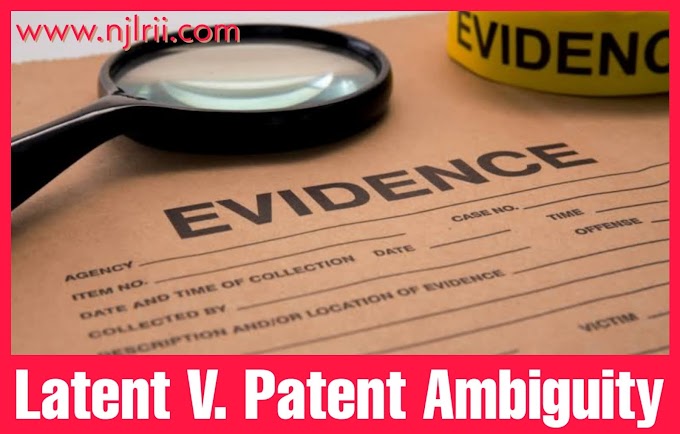By - Vidushi Gupta & Rhythm Sharma, UG Law Students, Faculty of Law, Aligarh Muslim University, Aligarh
ABSTRACT
This paper critically examines the issue of patent abuse within the Indian Intellectual Property Rights (IPR) regime, with a focus on the legal and policy mechanisms intended to prevent monopolistic exploitation of patents. While patent protection is essential to incentivize innovation, its misuse—manifested through practices like evergreening, patent thickets, and frivolous litigation—can undermine public welfare and hinder access to essential goods, especially in sectors like pharmaceuticals and technology. The study analyzes India’s legal framework under the Patents Act, 1970, particularly the significance of Section 3(d) and provisions for compulsory licensing as safeguards against such abuse. Landmark judicial decisions, such as Novartis AG v. Union of India and the Nexavar compulsory licensing case, illustrate India’s commitment to balancing innovation incentives with public interest. Furthermore, the paper contrasts India’s approach with global patent standards and proposes recommendations, including enhanced patent examination, stronger competition law enforcement, and the promotion of public interest litigation. The study concludes that while India’s patent regime incorporates vital checks against abuse, ongoing legislative and judicial vigilance is required to ensure that patent law continues to serve both innovation and societal needs.
INTRODUCTION
The Intellectual Property Rights (IPR) regime plays an integral role in promoting creativity and innovation by providing inventors, creators, and organizations with exclusive rights to their inventions, processes, and artistic works. Within the scope of IPR, “patents” serve as a powerful legal tool by providing inventors with the exclusive right to commercially exploit their innovations for a limited time, typically 20 years. In return, the inventor must disclose the invention to the public, contributing to the broader advancement of technology and knowledge.
However, the monopolistic nature of patents can often be misused or abused. Patent abuse refers to the exploitation of the patent system in a way that goes beyond its intended purpose, negatively affecting market competition, innovation, and the public interest. While the patent system is designed to strike a balance between incentivizing innovation and ensuring public access to essential goods and technologies, the potential for misuse remains high.
In India, the patent landscape is influenced by socio-economic priorities, particularly in sectors like healthcare, agriculture, and technology. India's patent law, largely shaped by the “Patents Act of 1970” and subsequent amendments (especially the 2005 amendment to comply with the TRIPS Agreement), seeks to prevent patent abuse while fostering an environment conducive to innovation. This project aims to critically analyze the phenomenon of patent abuse in India, examine how Indian IPR laws address the issue, and explore judicial interventions and legislative reforms necessary to strike a balance between protecting intellectual property rights and ensuring public welfare.
Patent Law Framework in India
India's ‘Patents Act, 1970’ provides the legal framework governing the grant, enforcement, and protection of patents. The Act was significantly amended in 2005 to align with India's obligations under the World Trade Organization (WTO) TRIPS Agreement, marking a shift from process patents to product patents in industries like pharmaceuticals and agrochemicals.
Key features of Indian patent law:
Patentable Subject Matter: Section 3 of the Patents Act outlines inventions that are not patentable. These include discoveries of natural processes, mathematical methods, traditional knowledge, and mere discoveries of new forms of known substances without significant improvement in efficacy. This reflects India's public policy considerations, particularly its concern for affordable access to essential goods like medicines.
Compulsory Licensing: Sections 84 and 92 of the Patents Act provide for compulsory licensing, allowing third parties to use a patented invention without the patent holder's consent under specific conditions. Compulsory licenses are granted in cases where the patented product is not available to the public at a reasonable price, where public health or national emergencies are concerned, or where the patent holder fails to work the invention in India.
Patent Term and Maintenance: The patent term in India is 20 years from the filing date, subject to annual renewal fees. Failure to pay these fees can result in the patent lapsing.
Patent Abuse in India: Forms and Implications
Patent abuse in India manifests in various forms, impacting competition, innovation, and consumer welfare. Some of the common practices of patent abuse include:
1. Evergreening of Patents -
Evergreening is a strategy used by pharmaceutical companies to extend the life of a patent beyond its original term by obtaining additional patents for minor modifications of an existing product. These modifications may include changes in dosage forms, formulations, or methods of administration, without a significant improvement in therapeutic efficacy.
Evergreening tactics can delay the entry of cheaper generic versions of drugs, thereby prolonging monopolies and keeping prices artificially high. In response to this issue, India's patent law includes Section 3(d), a unique provision that prohibits the patenting of new forms of known substances unless they demonstrate significantly enhanced therapeutic efficacy.
The most notable example of Section 3(d) in action is the Novartis AG v. Union of India (2013) case. In this landmark decision, the Supreme Court of India denied Novartis a patent for an updated version of its cancer drug “Glivec”, ruling that the new version did not meet the efficacy requirements of Section 3(d). The court's decision was hailed as a significant victory for public health advocates and the generic drug industry, as it prevented the patenting of incremental innovations aimed primarily at extending patent monopolies.
However, this strict interpretation of Section 3(d) has been criticized by multinational pharmaceutical companies, which argue that incremental innovations, though minor, may still offer valuable benefits to patients. The Novartis case has triggered ongoing debate over the balance between encouraging innovation and ensuring access to affordable medicines, particularly in developing countries like India.
2. Patent Thickets -
Patent thickets refer to the creation of a dense web of overlapping patents around a single product or technology. These thickets make it difficult for competitors to bring similar or improved products to market without infringing on one or more patents in the thicket. This tactic is often employed in sectors like telecommunications, electronics, and software, where complex technologies may involve multiple patents.
In the Indian context, patent thickets can create barriers for local manufacturers and innovators, particularly in industries like smartphones and telecommunications. Standard-Essential Patents (SEPs), which are patents essential for implementing industry standards, have been the subject of several high-profile disputes in India. For example, Indian smartphone manufacturers have been involved in legal battles with ‘Ericsson’ over the licensing of SEPs for mobile communication technologies.
While patent thickets can stifle innovation and raise costs for consumers, Indian competition law, particularly through the Competition Commission of India (CCI), has stepped in to address anti-competitive practices arising from the misuse of SEPs. The CCI has investigated several cases involving excessive royalty demands and refusal to license SEPs on fair, reasonable, and non-discriminatory (FRAND) terms.
3. Patent Trolls and Frivolous Litigation -
Patent trolls, or non-practicing entities (NPEs), are individuals or companies that acquire patents not to commercialize the invention but to initiate lawsuits against companies that allegedly infringe the patents. These trolls do not engage in any productive activities but seek to extract settlements or royalties through aggressive litigation.
While patent trolling is more common in jurisdictions like the United States, India is not immune to this practice, particularly in the software and telecommunications sectors. Patent trolls can burden companies with costly litigation and settlement demands, diverting resources away from innovation and research.
India's courts have taken a strong stance against frivolous litigation, emphasizing that patent holders must demonstrate a clear and genuine interest in commercializing their inventions. Courts have also imposed costs on parties that initiate baseless infringement lawsuits, thereby deterring patent trolls from exploiting the system.
Compulsory Licensing as a Tool to Address Patent Abuse
One of the most powerful tools available in India’s patent law to combat patent abuse is the provision for “compulsory licensing’. This provision ensures that essential patented products, particularly in the healthcare sector, are made available to the public at an affordable price.
A landmark case in this context was the issuance of a compulsory license for Bayer’s patented anti-cancer drug Nexavar in 2012. The Indian generic drug manufacturer Natco Pharma was granted a compulsory license to produce a more affordable version of Nexavar, as Bayer’s high pricing made the drug inaccessible to a vast majority of cancer patients in India. The compulsory license was granted under Section 84 of the Patents Act, which allows for such licenses if:
- - The patented invention is not available to the public at a reasonable price,
- - The reasonable requirements of the public with respect to the patented invention are not met, or
- - The patented invention is not worked in the territory of India.
This decision was a watershed moment in India’s patent law history, as it demonstrated the country’s commitment to prioritizing public health over patent rights. While compulsory licensing has been sparingly used since the Nexavar case, it remains an important safeguard against the abuse of patent monopolies in critical sectors like pharmaceuticals.



.jpeg)


